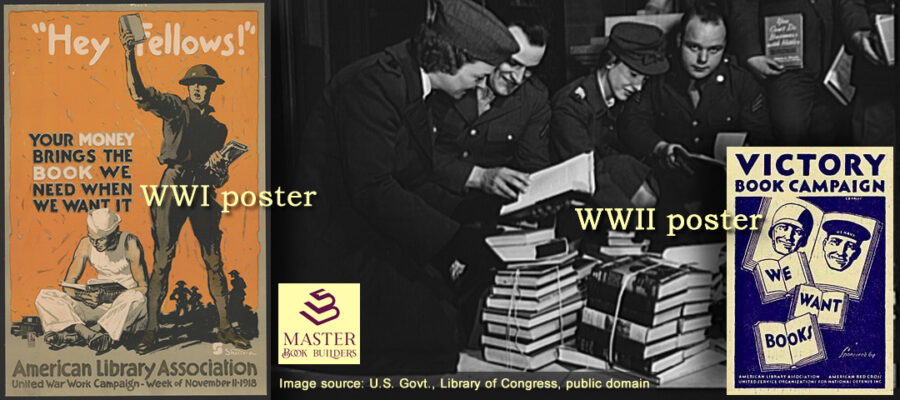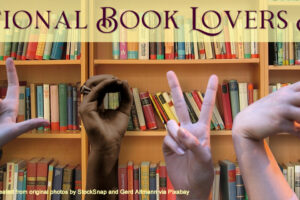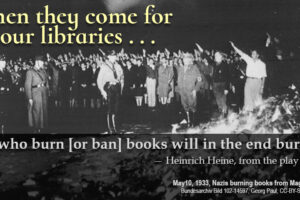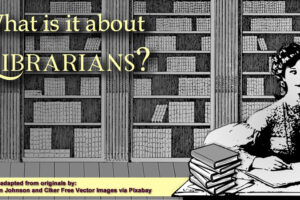Poet Warriors: Books are Weapons in the War of Ideas
“The society that separates its scholars from its warriors
will have its thinking done by cowards
and its fighting done by fools.”
— Thucydides (Athenian general, 400 B.C.)
quoted on the U.S. Army’s NCO Journal,
in an article entitled, “The Warrior Poet“
Perhaps you’ve read about the kerfuffle raised by a certain U.S. Senator over poetry being read aloud via the intercom on a Navy aircraft carrier by a nonbinary sailor. He called it “wokeness” and the reading of poetry by and to military personnel “insane.”
The Navy’s highest ranking Admiral defended both the reading and the sailor, testifying:
“I’ll tell you why I’m particularly proud of this sailor. Her grandfather served during World War II, and he was gay, and he was ostracized in the very institution that she not only joined and is proud to be part of, but she volunteered to deploy on the Ford. And she’ll likely deploy again next month when the Ford goes back to sea.”
I’m not going to get into the political arguments, except as they lead people like the Senator to appear ignorant of the history of the “poet warrior” concept, and to act out their fear of the power of books.
Long before Braveheart
I first heard the combination of terms in the 1995 movie Braveheart, when the narrator says:
“In the year of our lord thirteen fourteen, patriots of Scotland, starving and outnumbered, charged the fields of Bannockburn. They fought like warrior poets. They fought like Scotsmen. And won their freedom.”
The Army Captain’s article containing the Thucydides quote that I opened with goes on to trace the concept to medieval knighthood and the code of chivalry, which included the requirement of actively pursuing scholarly studies. He quotes another source for the idea that a knight needed more than just martial skills,
“such as knowledge of music, dance, as well as reading and writing … They learnt to recite poetry and cultivated good manners … and played games like chess.”
He also mentions the similarities to the Japanese Samurai Code of Bushido.
Others find roots of the poet warrior ideal farther back in the ancient Irish traditions of the Fianna (like Finn MacCool), who were trained as both warriors and poets, or in the Greek heroic figures like Odysseus.
As I covered in Read ‘Em & Reap, our current military training “recommends” reading books as a way to develop crucial leadership skills, including empathy and perspective from outside one’s own experiences. I cited to the U.S. Army’s Field Manual on Leader Development in the book, but here are some additional examples: U.S. Naval Institute (Military Reading Lists); Military Officers Association of America (Start 2023 with These 5 Contemporary Military Reads), U.S. Army Chief of Staff (Professional Reading Lists – which specifically includes fiction among its six categories of books).
The Chief of Staff’s page describes the purpose and benefits of reading. Far from imposing a required “group think” mentality, he writes:
“I challenge each of you to read these books and to discuss, debate, and think critically
about the ideas they contain.”
The opposite of banning/burning books
I’ve posted before about The Librarian of Burned Books, by Brianna Labuskes, historical fiction that includes the true story of the Council on Books in Wartime and its program to create and deliver Armed Services Editions of a wide range of fiction, poetry, and nonfiction books to our soldiers overseas. A major theme of ASE program was to contrast the Nazis’ book burning campaign with American freedom to read and think as we like.

The Council adopted the tagline “Books are weapons in the war of ideas” and President Roosevelt give his full support to providing our soldiers with books:
“… No man and no force can take from the world the books that embody man’s eternal fight against tyranny. In this war, we know, books are weapons.”
The contrast was quite real, but “pop quiz” — see if you can identify who spoke these words and where and when:
“No to decadence and moral corruption! Yes to decency and morality in family and state!”
(Answer at the end of this post.)
The ASE program produced nearly 123 million copies of 1,322 titles. They were sold to the government at the cost of production — 6 cents a copy! — plus 10 percent overhead. Authors and the publishers received a half cent each in royalties.
 Creative design choices enabled the books to be small enough to carry around easily and readable in low light settings. They were set up with two books per page, in landscape view, with two columns of text inside, then cut apart after printing.
Creative design choices enabled the books to be small enough to carry around easily and readable in low light settings. They were set up with two books per page, in landscape view, with two columns of text inside, then cut apart after printing.
The Library of Congress has a sample listing of titles in the fiction, poetry, and history/nonfiction categories at the bottom of its “About the Collection” page. If you want more details, see the National Archives booklet, Books in Action: The Armed Services Editions, with a complete list of titles in the appendix.
According to the Books in Action booklet, at the Library of Congress’ fortieth anniversary celebration of the ASE program, the following recollections are representative of many shared that day:
“Irving Lieberman read from a letter he had just received from a University of Washington professor, who said the books ‘introduced me not only to new literary friends but opened up associations with some old ones. I remember in particular Hemingway, Sigrid Undset, Dickens, and Maugham. . . . I still have a half-dozen of these paperbacks. They represent the most positive of my memories of service days.’ Arnold Gates told how during the Battle of Saipan he carried a copy of Carl Sandburg’s Storm over the Land in his helmet: ‘During the lulls in the battle I would read what he wrote about another war and found a great deal of comfort and reassurance.’ Years later, Sandburg inscribed the book for him.”
What can you do now?
As the image at the top of this post indicates, there was a similar books for soldiers campaign during World War I. And today you can participate directly in getting books to our troops through the Operation Paperback “Recycled Reading” program. The program accepts both monetary and used book donations.
I was happy to see that Operation Paperback is recommended by the AARP as a DIY way to “Create the Good” with a detailed guide on how to participate. It’s worth noting that the guide says not to send “romance novels” as the program “reports that our troops do NOT read them, and they are very disheartened when they receive them.”
Take advantage of the Postal Service’s “Media Mail” shipping rate, as the AARP site estimates you can ship a box of 20 paperbacks for around $5 (might be a little more than that these days, but we’ve always used it for shipping books and had good results).
Answer to the pop quiz: Joseph Goebbels, Berlin, May 10, 1933 (source: the United States Holocaust Memorial Museum). I suspect you at least considered the possiblity that it came from the leader of Moms for Liberty, arguing for banning a list of books at a local school board meeting in small town USA, 2023.






Leave a Reply